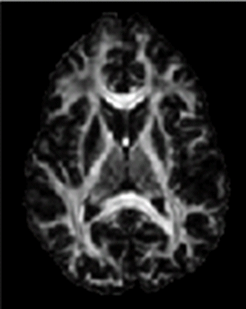

MedFriendly®


Anisotropy
Anisotropy means not having properties that are equal in all
directions. This characteristic has uses in medicine, such as
in ultrasound scanning, which is a procedure that uses high-
frequency sound waves to produce images of internal body
structures. When the device emitting the sound waves
(known as a transducer) is placed perpendicular to a tendon,
muscle, or nerve, they appear brighter compared to when it
is placed obliquely (at an angle other than a right angle [90
degrees] or a multiple of a right angle [180, 270, or 360
degrees]). This effect occurs because the ability of tendons,
muscles, and nerves to bounce an echo changes depending
on the angle of the transducer. Even changing the angle 2
degrees from perpendicular can cause the effect to happen.
Anisotropy shown on a brain
MRI (diffusion tensor imaging).
FEATURED BOOK: Diffusion Tensor Imaging: A Practical Handbook
This can cause interpretation problems for new ultrasound examiners (e.g., making a
tendon appear inflamed when it is not) but can be overcome by using a technique known
as beam angulation, which is available on modern day ultrasound devices. Another
popular area where the term anisotropy is used is in diffusion tensor imaging (DTI), which
is a form of magnetic resonance imaging (MRI). MRI scans produce extremely detailed
pictures of the inside of the body by using very powerful magnets and computer
technology. DTI assesses the directional flow of water molecules along nerve fiber tracts
in white matter. White matter is a group of white nerve fibers that conduct nerve
impulses quickly.
"Where Medical Information is Easy to Understand"™
Normally, the water molecules run in the same direction as the fiber
tract, which is why the directional flow is called anisotropic. Water
molecules outside of the white matter in the brain flow in different
directions because they have fewer restrictions on their directional
flow. This is why the directional flow in these areas is called
isotropic because this means to have identical properties in all
directions. The directional flow of water molecules in DTI is
measured with a metric called fractional anisotropy (FA), which
ranges from 0 to 1. Values closer to 0 are more isotropic and
values closer to 1 are more anisotropic. This information all helps
create detailed images of white matter tracts in the brain.

Anisotropic means pertaining to anisotropy. Anisotropy comes from the Greek word "an" meaning "not,"
the Greek word "isos" meaning "equal," and the Greek word "tropos" meaning "a turning." Put the words
together and you have "a turning not equal."














